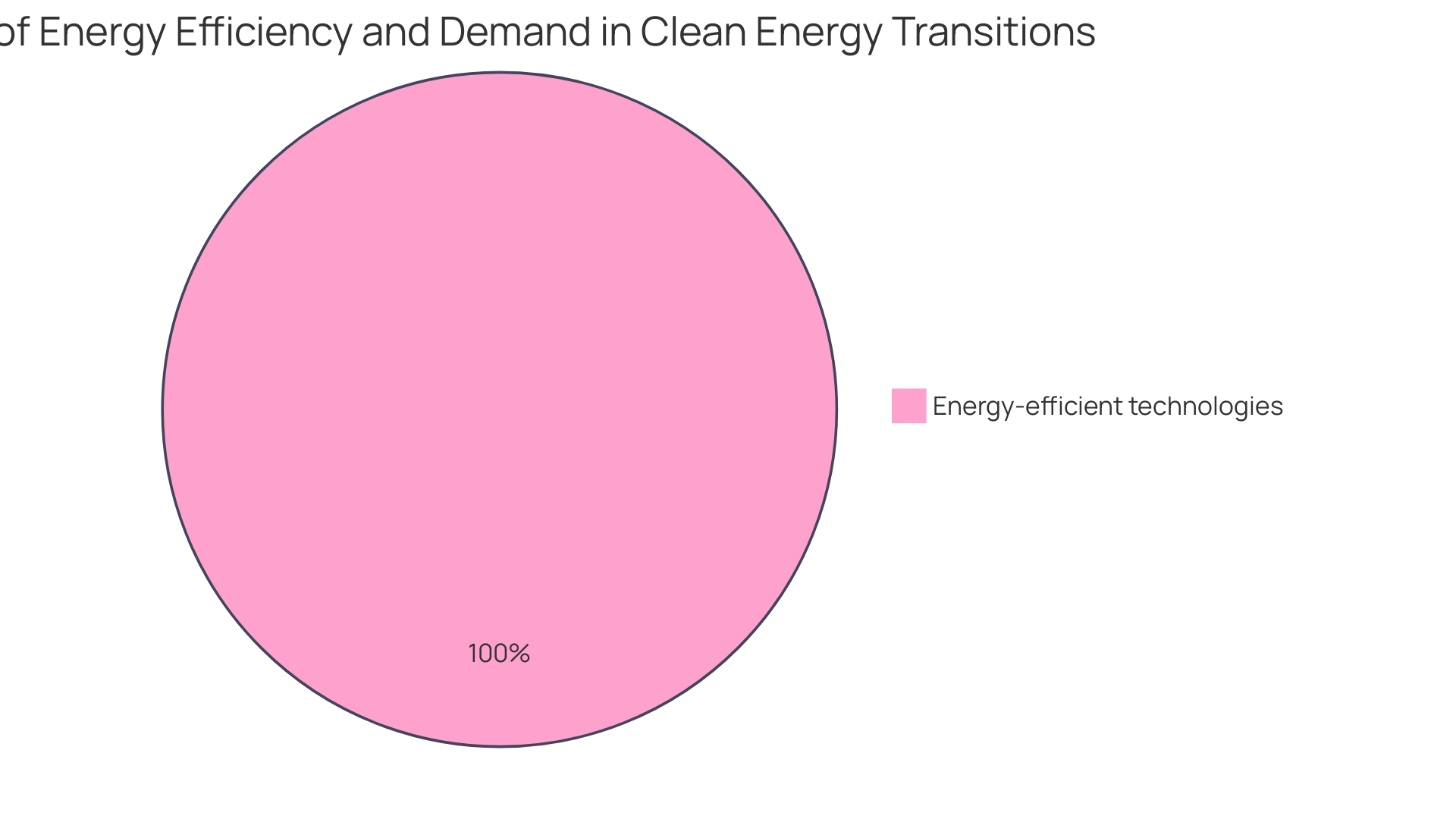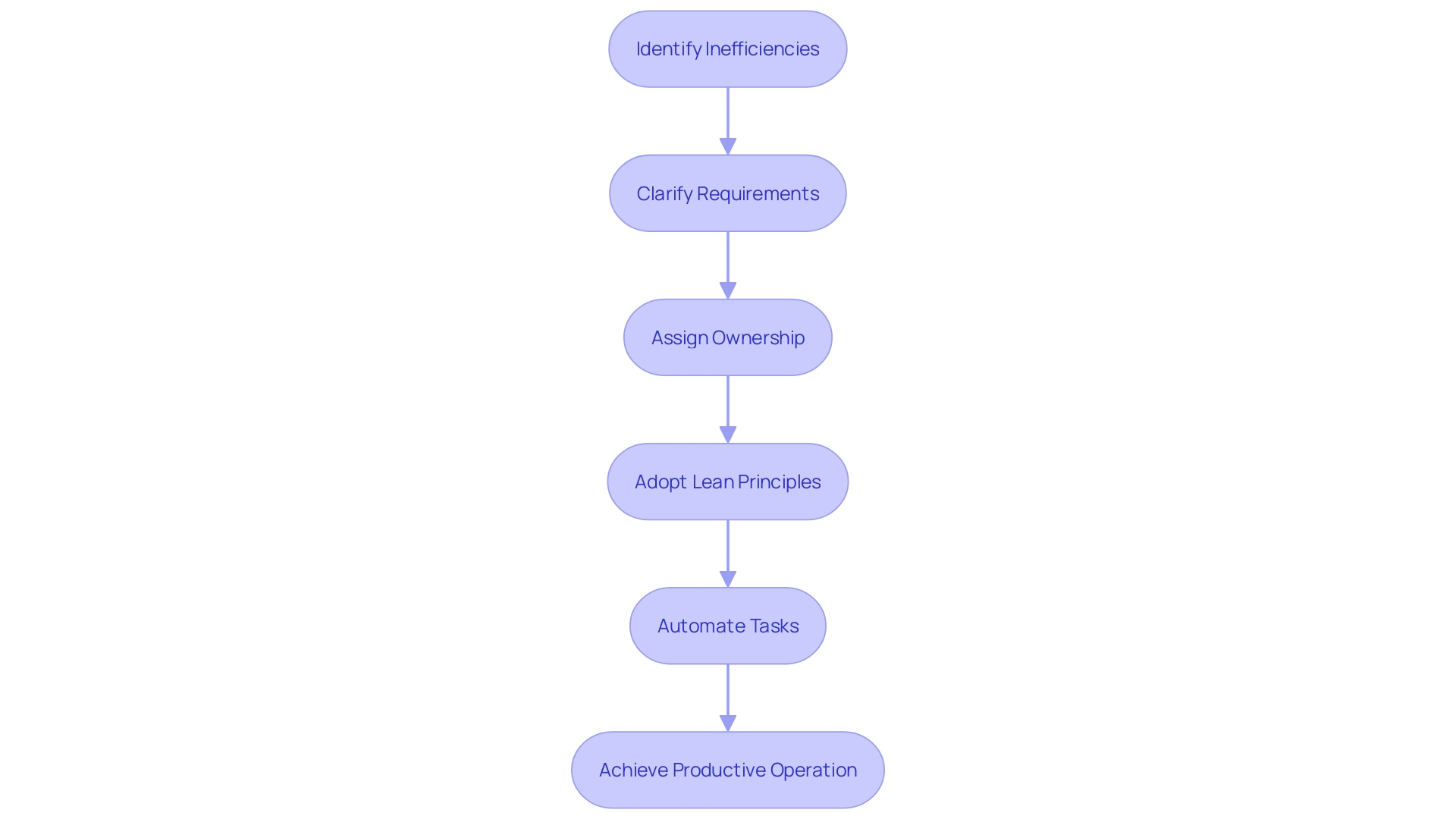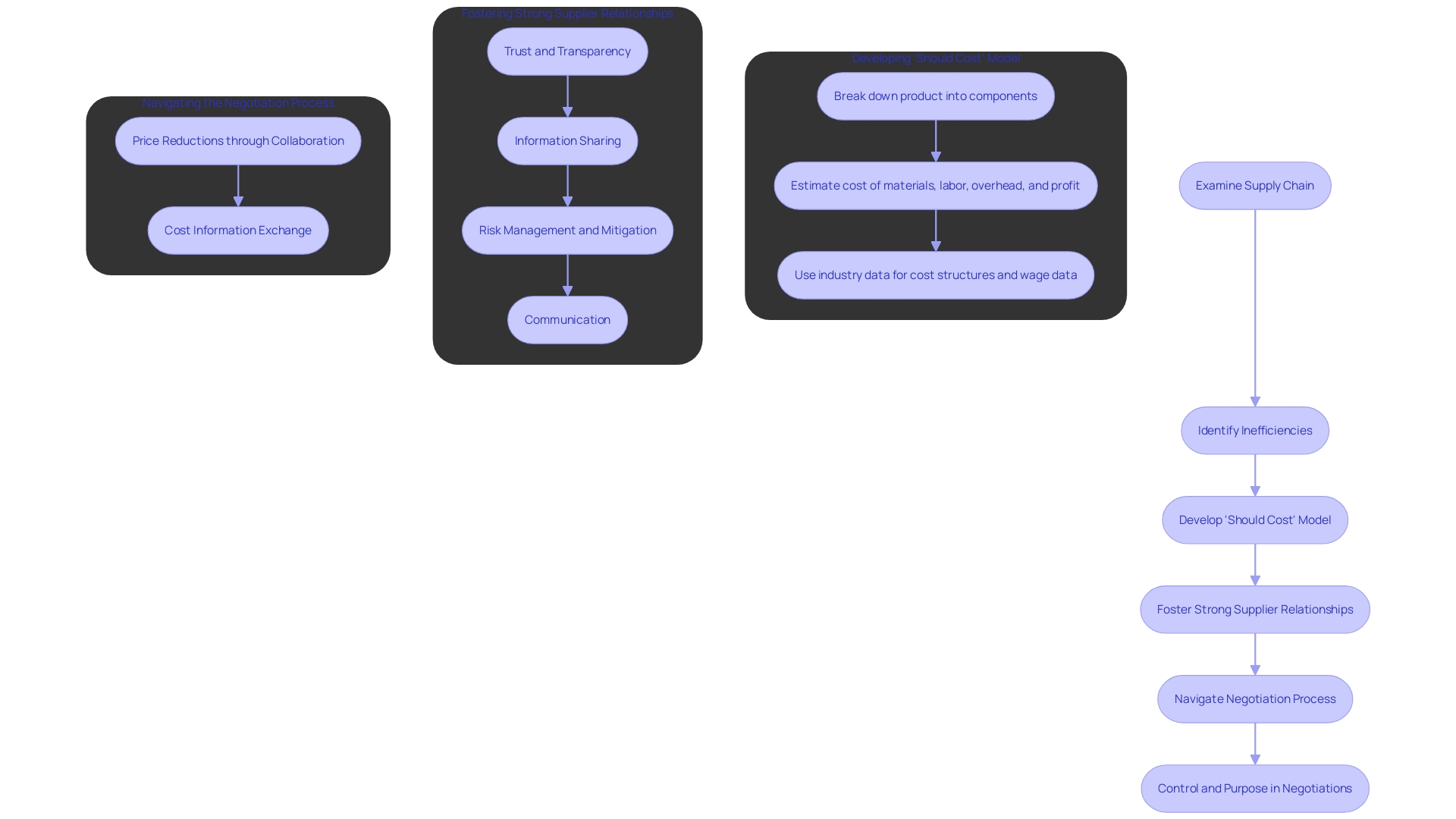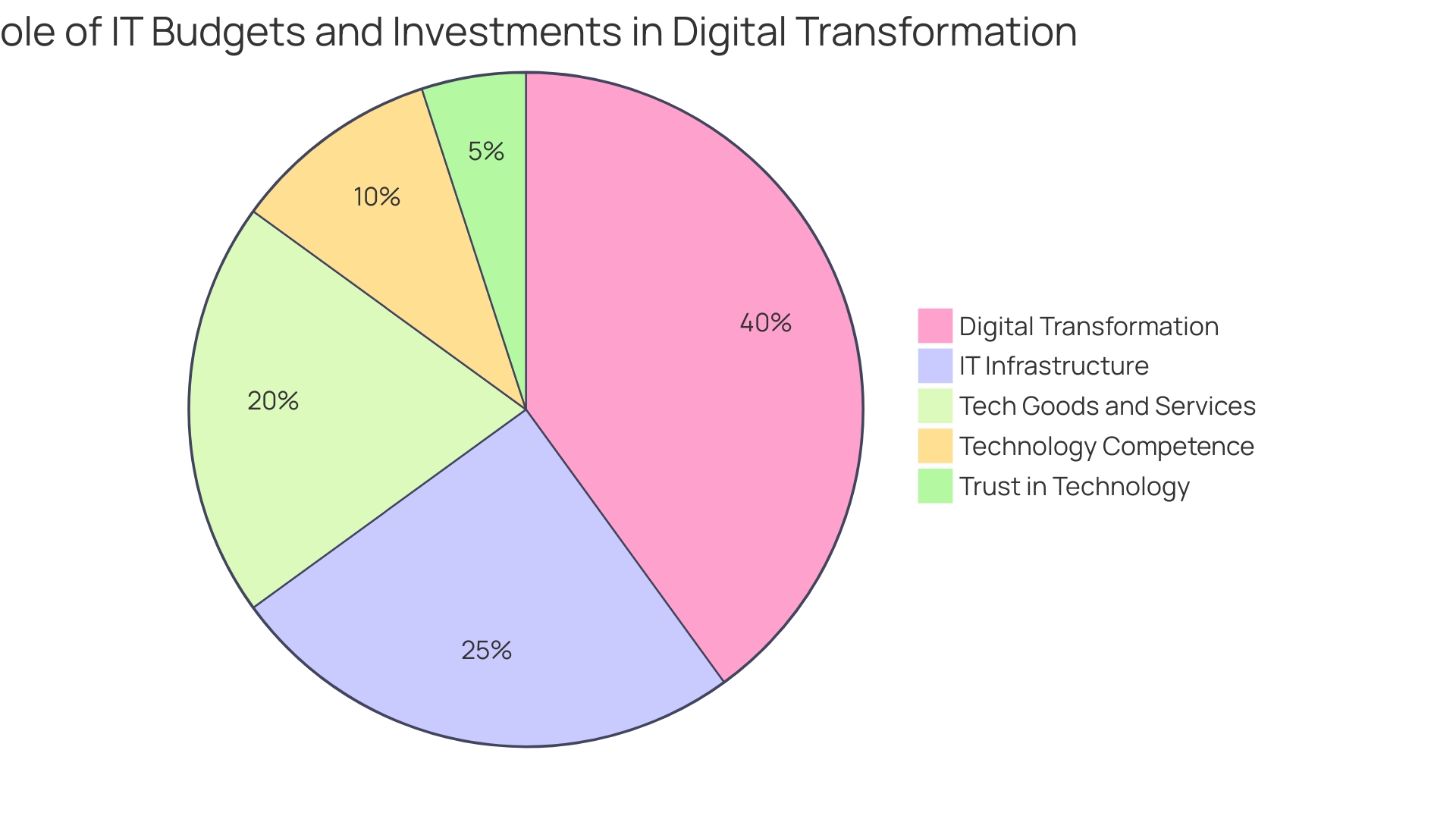Introduction
Optimizing operational costs is a crucial goal for CFOs, and there are several strategies that can help achieve this objective. From implementing energy-efficient practices to streamlining processes and eliminating waste, every step taken can lead to significant savings. Furthermore, negotiating with suppliers, investing in technology, improving inventory management, outsourcing non-core functions, implementing sustainable practices, and continuously monitoring and evaluating performance are all key tactics that can contribute to cost optimization.
By adopting these strategies, CFOs can drive financial health, enhance operational efficiency, and ultimately position their organizations for long-term success in today's competitive business landscape.
Optimize Energy Efficiency
Maximizing energy conservation is a potent approach for businesses seeking to reduce operating expenses while also contributing to environmental preservation. Transitioning to energy-efficient lighting, modern appliances, and enhancing building insulation can lead to considerable reductions in energy usage. For instance, Smart Building Automation Systems (BAS) have been shown to reduce energy consumption by 8% to 15% through intelligent control of lighting, HVAC, and other systems based on real-time data such as occupancy and weather conditions.
Adopting energy conservation not just reduces utility expenses but also aligns with growing environmental concerns. As emphasized by Xbox's initiative to incorporate energy-saving features in games, which are designed to be unnoticeable to players, it is possible to implement energy conservation in ways that are seamless yet impactful. With the average high-performance gaming device consuming as much as 167 kWh annually, the equivalent to the emissions from 36 kilograms of coal, the potential savings at scale are significant—akin to the output of 20 wind turbines in a year.
Municipalities like the City of Guelph are setting a precedent by achieving ISO 50001:2018 certification for their energy management systems, underscoring the importance of setting clear energy performance objectives and using data to drive decisions. Similarly, businesses can adopt practices like going paperless, printing on both sides of the paper, and opting for black and white printing to reduce waste and energy usage. These straightforward yet impactful measures contribute to operational effectiveness and are in accordance with the objective to decrease energy demand without compromising economic output, as emphasized by Ana botin of Santander.

Streamline Processes and Eliminate Waste
Optimizing workflows by eradicating inefficiencies is a vital tactic for curtailing operating expenses and bolstering productivity. Businesses that pinpoint and discard superfluous activities not only save on costs but also enhance their efficiency. Methods to accomplish this involve implementing Elon Musk's five-step algorithm to clarify and validate every requirement, appointing ownership by naming the individual accountable for each requirement. This transparency allows for a critical evaluation of the necessity and relevance of each step.
To enhance efficiency, organizations are recommended to adopt lean management techniques, which concentrate on comprehending the requirements of key customers and removing non-value-added activities. By adhering to the lean principle of producing only to meet demand, companies can avoid the pitfalls of overproduction and excess inventory. In practice, this translates to a more agile and resource-efficient operation with a customer-centric approach.
Automation plays a pivotal role in enhancing productivity, as highlighted by Musk's emphasis on clarity in task assignments. Tools such as ClickUp can help manage tasks effectively, preventing the risks associated with ad hoc workflows and ensuring team members are aware of their responsibilities. This strategy prevents tasks from slipping through the cracks, which could jeopardize an entire project.
The statistical evidence supports the efficacy of these methods, with companies reporting substantial cost savings. For example, enterprises in Ontario have saved more than $900 million every year by getting rid of repetitive regulations and procedures. The success of these strategies can be seen in the rapid growth and job creation in the region, proving the tangible benefits of optimization.
In summary, by incorporating lean principles, automating tasks, and ensuring clarity and accountability in process requirements, businesses can achieve a leaner and more productive operation, ultimately leading to a competitive edge in today's fast-paced business environment.

Negotiate with Suppliers
Effective supplier negotiations can result in a more advantageous Cost of Goods Sold (COGS) and decrease operational expenses, which are crucial for a strong financial strategy. Through examining the entire supply chain and comprehending the complexities of the product flow, CFOs can pinpoint areas where inefficiencies, such as duplicate processing or inadequate monitoring, increase expenses. Insights from the medical device industry emphasize the significance of integrating a 'comprehensive ownership analysis' that takes into account both tangible and intangible expenses - such as administration and operational disruptions, which are frequently overlooked during budgetary preparations.
To achieve significant savings, a CFO can develop a 'should price' model that breaks down a product into its components, estimates expenses, and compares them against industry data to highlight discrepancies in supplier quotes. This model considers materials, labor, overhead, and profit margins, offering a comprehensive view of potential expenses and prices that are not fixed but vary with market dynamics.
Furthermore, fostering strong supplier relationships can unlock additional benefits. Efficient management of relationships with suppliers, characterized by trust and transparency, can result in price reductions and exchanges of cost information that optimize production. As John Hart of John Dee Warwick realized, modernizing operations through strategic upgrades and leveraging automation can significantly enhance efficiency and scalability to meet growing demands.
Negotiating from a position of strength requires knowledge of both your company's and the supplier's capabilities and needs. Start by listing your strengths, weaknesses, and objectives, and be ready to articulate your side's desires while considering potential concessions. By doing so, you can navigate the negotiation process with control and purpose, aiming for mutually beneficial outcomes.

Implement Cost Control Measures
To achieve comprehensive expense optimization and decrease both operating expenses and the expense of goods sold (COGS), it's critical to embrace a systematic approach that encompasses financial management, resource provision, data management, and meticulous expense monitoring. By examining spending patterns and identifying areas where outlays exceed requirements, financial leaders can initiate targeted strategies for expense containment.
Specifically, CFOs can leverage advanced financial tools and technology to enhance operational efficiency and ensure every dollar spent contributes to the organization's value proposition. For instance, through the implementation of accounting systems, companies can uphold a detailed supervision of expenses across different departments, guaranteeing conformity with industry top methods for efficiency in expenses.
One practical measure is implementing an expense approval process, which can deter unnecessary or excessive spending. Simplifying operations with technology, like the utilization of an AI-driven expense management system, can additionally remove the expenses connected with manual data entry and paper-based invoicing.
Furthermore, the search for alternative suppliers and vendors can result in significant reductions in expenses without compromising the quality of the product or service. This is evidenced by the transformation seen at Travel Charme Strandhotel Bansin, where technology-facilitated operations bolstered the guest experience while optimizing costs.
The integration of financial and technological expertise within the organization is paramount. Collaboration between CFOs, financial planners, and technology leads can foster a holistic understanding of the financial implications of technology investments, ultimately linking technology expenditure to tangible outcomes.
Furthermore, present economic circumstances, as emphasized by recent news, require that enterprises stay adaptable and receptive to worldwide market changes. As such, CFOs must continuously improve expense management practices to sustain growth and profitability in an increasingly competitive landscape.
In conclusion, through tracking, analyzing, and refining cost structures, CFOs can guide their organizations towards greater financial health and resilience, ensuring that operating costs remain a small fraction of revenue for sustained success.
Review and Optimize Business Processes
In order to fully leverage the advantages of operational effectiveness, CFOs need to thoroughly examine the complexities of business operations, analyzing each phase to identify inefficiencies and constraints. This is not a mere academic exercise; it's a strategic move that transforms how resources are allocated and tasks are scheduled. Evidence of this approach's effectiveness is seen in Travel Charme Strandhotel Bansin's experience, where technological advancements played a pivotal role in streamlining hotel operations, enhancing the guest experience, and ultimately, boosting profitability.
Rivian, the progressive electric vehicle manufacturer, provides another compelling narrative. Their commitment to sustainability is more than an environmental stance; it's a strategic decision impacting every facet of their operations. By focusing on sustainable raw material sourcing and minimizing waste across the globe, Rivian is not just meeting regulatory standards but setting new benchmarks in operational efficiency.
AT&T's experience is particularly telling. Their long history had inadvertently fostered a maze of cumbersome processes, but a candid employee survey sparked a transformative journey. By scrutinizing and refining their operations, AT&T moved from a tradition-bound entity to a nimble organization, responsive to the dynamic demands of the telecommunications industry.
Moreover, as we pivot towards a sustainable economic recovery, businesses that have strategically invested in agility and technological enhancements are poised to emerge stronger. These companies recognize that divesting from outdated practices and adopting forecasting tools is not optional but essential for a prosperous future.
Operational efficiency and supply chain management are interdependent, and their optimization is critical for both immediate cost savings and long-term financial health. In our current economic landscape, a company's agility in responding to market changes and customer preferences is not just commendable but necessary for survival. The most forward-thinking CFOs are those who leverage workflow automation, as suggested by the 94% of corporate executives preferring a unified platform for app integration and process automation.
In summary, the pursuit of operational excellence is a continuous journey, marked by the strategic use of technology, a commitment to sustainability, and an unwavering focus on resource optimization. These components, when merged, create the foundation of a strong, cost-efficient, and competitive model.
Invest in Technology
Strategically investing in technology is a proven method for companies to streamline operations and cut costs. By leveraging the latest advancements, organizations can automate tasks that were once manual, enhance productivity, and optimize labor expenditure. For example, cloud computing has transformed the IT and software development sector, allowing companies to handle workloads more dynamically and support continuous integration and deployment pipelines. The adaptation of cloud-based solutions allows for more efficient resource management, which is especially beneficial for companies that must maintain a competitive edge in fast-paced market environments.
Furthermore, the integration of enterprise resource planning (ERP) systems into operations can create a more cohesive environment, allowing for improved data flow and decision-making processes. This is highlighted by the reality that operational expenses make up a substantial portion of a business's expenditures. Therefore, reducing such costs is critical to maintaining profitability. By employing ERP systems, companies can streamline their processes and reduce the resources required for tasks such as inventory management, billing, and compliance.
The impact of technology on operational efficiency is also seen in the realm of data analytics. Advanced tools are capable of processing vast volumes of data to uncover trends and provide actionable insights, which can lead to better strategic decisions made on real-time information. For example, predictive analytics can anticipate market trends, thereby enabling businesses to adjust their strategies proactively and maintain a competitive advantage. Data visualization tools further aid in making complex data sets accessible and comprehensible to stakeholders, enhancing the decision-making process.
In addition to these efficiencies, technology plays a crucial role in cybersecurity and risk mitigation. In today's digital landscape, strong cybersecurity measures are essential to protect sensitive corporate and customer data. The trust that customers place in a brand often hinges on their confidence in the brand's ability to protect their information, which is facilitated by technology.
The importance of technology investment is further emphasized by the significant global spending in the tech sector. IT budgets are now essential to organizational success across various industries, emphasizing the convergence of technology and corporate strategy.
In general, the prudent implementation of technology solutions not only decreases operating expenses but also improves the value generation within a business, establishing the foundation for sustained growth and success.

Improve Inventory Management
Mastering inventory management is a pivotal component for operational expense reduction, particularly crucial for entities that handle physical goods. Streamlining inventory levels ensures a strategic balance that curtails carrying costs and mitigates the risk of product obsolescence while preventing the dilemma of stockouts. The implementation of advanced inventory management systems, the regular practice of inventory audits, and the strategic adoption of just-in-time inventory methodologies are crucial in achieving these benefits. Sellers on platforms like Amazon have harnessed advanced tools to reclaim lost profits by meticulously tracking and recuperating lost or unaccounted-for inventory, leading to substantial enhancements in their financial outcomes.
Additionally, real-time inventory insights empower eCommerce retailers to expedite sales and delivery, thereby not only optimizing inventory turnover but also enhancing the customer experience. In line with growing consumer spending on products with Environmental, Social, and Governance (ESG) claims, retailers are pivoting their operations towards sustainability. The upcoming EU Digital Product Passport requires extensive data throughout the lifecycle of a product, which can be effectively managed using existing RAIN RFID tags, further enhancing operational effectiveness while achieving sustainability goals.
In light of the digital transformation, especially in industries like automotive shifting towards electric vehicles, inventory optimization has become a cornerstone in managing net working capital and driving free cash flow. Reducing product complexity and the number of unique components directly correlates to reduced inventory needs. Furthermore, warehouse inventory management emerges as the backbone of supply chain efficiency, encompassing technology integration and strategic practices to ensure product availability aligns with customer demand, ultimately minimizing costs and enhancing warehouse performance.
Embracing robust demand forecasting methods, such as moving averages and time series analysis, is crucial for organizations to maintain optimal inventory levels. Methods such as ABC analysis classify inventory according to importance, guaranteeing attention is given to items that are most crucial to the organization. In the food and beverage industry, for example, inventory control systems with lot and batch tracking capabilities are essential for traceability and managing product recalls, highlighting the multidimensional benefits of effective inventory management across various sectors.
Outsource Non-Core Functions
Outsourcing non-essential functions can significantly trim operational costs for companies. Specifically, delegating tasks such as accounting, human resources, and IT support to specialized vendors enables organizations to enjoy substantial savings on labor expenses, curtail overhead, and redirect their efforts towards primary business pursuits. This approach not only garners specialized skill sets but also enhances adaptability to market fluctuations.
For instance, AT&T, with its storied legacy dating back to 1885, realized that outdated systems were fostering employee dissatisfaction. They embraced outsourcing to revitalize their operations and align with modern requirements. Partnering with a seasoned entity like Rackspace allowed IFCO to navigate the nuances of cloud computing, underscoring the benefits of expertise that outsourcing brings. Similarly, Chess.com leveraged outsourcing to scale its IT infrastructure, crucial for supporting its monumental user base and fostering global connections through the game of chess.
Moreover, the outsourcing industry, which is projected to surpass $38 billion, is rapidly adopting AI tools to elevate competitiveness and refine service models. These tools help human operators by gathering customer interactions, thus streamlining procedures and improving customer service.
However, it's essential to acknowledge potential concerns, such as data security, when entrusting sensitive information to Managed Service Providers (MSPs). Companies must diligently assess the MSP's credibility and the protective measures they implement.
In essence, outsourcing is more than a cost-cutting mechanism; it's a strategic choice for operational efficacy. It can involve short-term projects or long-term engagements, depending on the organizational objectives. The key lies in identifying the right functions to outsource and partnering with the right service provider to optimize both financial and operational performance.
Implement Sustainable Practices
Embracing sustainable innovation is not just an environmental statement; it's a strategic move that can result in significant reductions in expenses. For instance, digital tools and employee engagement in sustainability programs, like those of the EcoProgress Ambassadors, not only contribute to reducing greenhouse gas emissions but also enhance skill sets among the workforce, adding value to the company's human resources.
The integration of sustainable practices, such as adopting paperless processes and recycling, goes hand in hand with operational efficiency. Comwell Hotels' transition to a more specialized and digitized system demonstrates how outdated management systems can be transformed, leading to increased customer satisfaction and recognition in the hospitality industry.
Moreover, the implementation of energy-saving initiatives, like retrofitting autoclaves in research facilities to use recirculated water, exemplifies how companies can significantly reduce their resource consumption. This aligns with the broader strategy of reducing greenhouse gas emissions by identifying and implementing practices and sub-practices that support environmental sustainability.
The financial benefits of these strategies are evident, as companies that position sustainability as a core strategic pillar report growth, improved profitability, and reduced costs. Companies that share carbon emissions data, like those in the Catena-X automotive program, not only contribute to a transparent supply chain but also position themselves as competitive entities in the journey towards net zero.
Overall, sustainable innovation is a multifaceted strategy that enables companies to enhance their environmental footprint while also reaping economic benefits and strengthening their brand image. As we gaze into the future decade, it's evident that sustainable innovation is a powerful tool for enterprises aiming to flourish in an ever more environmentally aware market.
Continuously Monitor and Evaluate
The cornerstone of maintaining a lean operation lies in the vigilant oversight of cost-reduction tactics. As financial stewards, CFOs must engage in a regular cadence of scrutiny over the company's financial health. This involves in-depth examinations of financial reports, dissecting key performance indicators, and evaluating the tangible outcomes of cost-saving maneuvers. The goal is to identify opportunities for additional improvement, adjust strategies as needed, and establish a path towards continued cost effectiveness.
For example, AT&T's historical entanglement with complex systems and protocols, accrued over a century of operation, demonstrates the need for such ongoing assessment. Only through a proactive approach can a business dismantle unproductive bureaucracies that have existed unchallenged, as AT&T did in response to employee feedback.
Moreover, recent remarks by Ana Botín, leader of a global banking firm, underscore the urgency for enterprises to reduce energy consumption without hampering economic progress. In sync with these sentiments, firms are urged to quickly reduce energy needs, aligning with global targets such as the Paris Agreement and COP28's aspirations for energy conservation.
To this end, the integration of digital advancements serves as a pivotal driver for operational cost savings. As businesses digitize their processes, they unlock avenues for innovation, heightened productivity, and enriched client experiences. In fact, reports indicate a surge in mentions of 'operational efficiency' in corporate earnings discussions, with a particular emphasis on investments in AI and related technologies that promise to bolster productivity.
Ultimately, the act of continuous refinement in operational costs is not merely about expenditure tracking. It embodies a comprehensive strategy that fosters customer retention, ecological sustainability, and data protection, all while harnessing the potential of digital transformation to ensure the enterprise remains competitive and profitable in an increasingly digital world.
Conclusion
In conclusion, CFOs can drive financial health and enhance operational efficiency by adopting strategies such as optimizing energy efficiency, streamlining processes, negotiating with suppliers, implementing cost control measures, investing in technology, improving inventory management, outsourcing non-core functions, and implementing sustainable practices.
Optimizing energy efficiency through practices like Smart Building Automation Systems leads to significant reductions in energy usage and lower utility expenses. Streamlining processes, adopting lean management techniques, and automating tasks enhance productivity and reduce costs. Strategic supplier negotiations and fostering strong relationships optimize the production process and lead to cost reductions.
Implementing cost control measures, leveraging advanced financial tools, and pursuing alternative suppliers contribute to comprehensive cost optimization. Reviewing and optimizing business processes, embracing technology, and focusing on sustainability are key for operational excellence. Strategically investing in technology enhances productivity, resource management, and decision-making processes.
Mastering inventory management through sophisticated systems and just-in-time methodologies reduces carrying costs and prevents stockouts. Outsourcing non-core functions to specialized vendors saves on labor expenses and enhances adaptability. Embracing sustainable practices reduces costs, enhances brand image, and fosters economic benefits.
Continuous monitoring and evaluation of cost-reduction tactics are essential for maintaining a lean operation. Digital advancements drive operational cost savings and ensure competitiveness. By implementing these strategies, CFOs can steer their organizations towards greater financial health and sustained success.
Start optimizing energy efficiency today and save on utility expenses!




